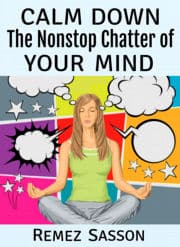
Have you ever wondered about the different types of meditation? There are multiple different meditation options that you could consider, and fortunately, we’re on hand to give you some new ideas and advice about how to get started.
After all, when it comes to your mindfulness and self-happiness, then there are numerous ways you could go about improving your well-being.
Fortunately, our team of professionals are on hand to help you learn more about the seven types of meditation so you can decide which one is the most ideal for your needs – and we’ve listed these as follows below.
Browse our online courses on meditation, positive thinking, overcoming procrastination, confidence, and freedom from distractions.
But remember! There’s no right or wrong answer here, and each of the different types of meditation come with pros and cons. So, always make the right choice for your meditation needs, and if you need any additional help, feel free to ask!
The 7 Types of Meditation
1. Transcendental Meditation
Transcendental Meditation is a great choice for a shorter duration. This form of meditation typically lasts 20 minutes.
During transcendental meditation, you simply need to choose a sound, word, or even a whole short phrase, and focus on it. You’ll want to then repeat this for the whole twenty minute session, which should help settle the thought in your subconscious mind.
Of course, you should always choose a method that’s comfortable for you. There are different ways to focus and repeat and you can experiment to find which specific ways work for you with this meditation technique.
2. Mindfulness Meditation
Mindfulness meditation is among the most commonly practiced forms of meditation, and is based on the theory of being in the moment and knowing where you are.
Indeed, while mindfulness meditation can be carried out anywhere, it’s pretty common for people to carry out mindfulness in the privacy of their own home where they have time to reflect on thoughts without passing judgement at that time.
3. Vipassana Meditation
When it comes to meditation, Vipassana can be an excellent option to consider. Indeed, a growing number of people are trying this type of meditation these days – even though vipassana meditation actually originated over 2,500 years ago! This movement has been especially prominent in the United States.
Vipassana meditation is primarily focused on self-reflection, self-observation, and self-transformation.
It helps strengthen the connection between mind and body, often leading to a superior sense of calm and relaxation overall. Plus, it’s often used as part of a healthy lifestyle plan, supporting ethical healing efforts and allowing people to work toward relief from addictions.
4. Guided Meditation
Commonly, guided meditation sessions are carried out with support from a professional meditation guide – however, this isn’t always the case, and there are actually many types of guided meditation classes you can pursue. This is particularly true after lockdowns, with many of us turning to virtual solutions for our normal choices!
During guided meditation sessions, you’ll usually use your senses to guide your body through the meditation process.
Indeed, many sessions will use a unique combination of scents, sounds, and textures to begin creating a sense of calm in the meditator. All the while, these simple items can also help connect you with happier times as a child.
5. Yoga Meditation
While yoga comes in many forms and styles, there are many that can be helpful for the purposes of meditation. In fact, you can use yoga for meditation easily by concentrating and having a good sense of balance.
Of course, yoga meditation is at its most effective when you are able to tune out from nearby distractions. Better yet, if you can remove them entirely. This can be a great way to improve your learning.
A great idea is to also see what yoga styles and poses are most comfortable and accessible for you before attempting to use them for meditation.
After all, getting stuck in an awkward position isn’t exactly ideal, so preparing in advance is crucial to avoid frustration or setbacks in your meditation journey.
Learn About Our Online Meditation Course
Various meditation techniques for finding inner peace, expanding consciousness, and awakening.
6. Metta Meditation
A further form of mindfulness meditation that many people struggle with is Metta meditation – a form of meditation that’s actually less focused on your own personal growth and instead prioritizes supporting other people.
Usually, a Metta meditation session will begin by sitting comfortably on the floor, and the meditator will begin by chanting positive affirmation phrases.
Again, there’s no right or wrong answer here – so just take some time to consider which options might work for you. Common chants include, “May I be healthy, may I be happy, may I be relaxed.”
Still, anything that works for you would be great! Then, simply turn these phrases to the other people in your life, too, to begin spreading the positive affirmations and emotions.
This can be as simple as repeating what you said, but replacing “I” with “you”. That’s all there is to get started! Plus, Metta meditation often ties in with the Angel number 1222, making it even more influential potentially.
7. Chakra Meditation
Not everyone believes in chakras, but that’s okay – even if you don’t, chakra meditation principles and practices can be highly effective! Indeed, during chakra meditation, you work to bring your chakras into balance and harmony.
By doing so, you will usually experience a sense of inner peace and relaxation during chakra meditation sessions too. If you are especially passionate about this form of meditation, you could also consider using incense or color coded crystals to enhance the experience in its entirety.
>Final Thoughts
If you have wanted to try meditation, then it’s always worth considering one of these top seven types above.

